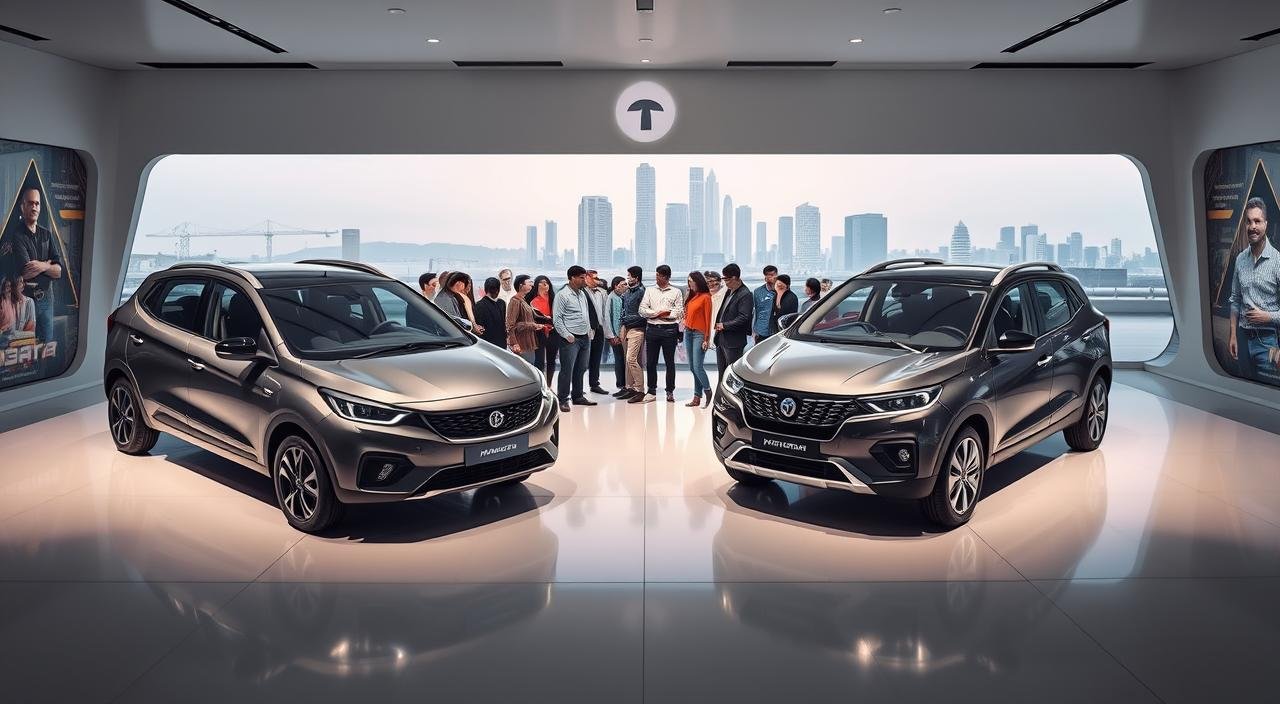
Oct
Which giants will change India’s SUV scene soon? Tata Motors and Mahindra are set to launch new vehicles. These could change what people want to buy.
India’s car market is about to get exciting. Tata and Mahindra will update their best sellers and bring back old favorites. This is because people want cars that are good for the planet and are now cheaper thanks to GST changes.
The SUV market in India will see more competition from Tata and Mahindra. They know that to win, they need to offer great performance, design, and value. Their new cars will have modern features but won’t cost too much.
The new Tata & Mahindra cars show a big change in how they make cars. Electric cars, smart tech, and better safety will be key. This is because people want cars that are good for the environment and meet new rules in big cities.
Key Takeaways
- Tata and Mahindra will launch multiple SUV models within the next 18 months
- Recent GST reforms have made vehicles more affordable for Indian consumers
- Both manufacturers will introduce facelifted versions of popular existing models
- Electric and hybrid variants will play a significant role in new launches
- Competition will intensify in compact and mid-size SUV segments
- Classic nameplates will return with modern updates and features
- Green technology adoption reflects changing buyer preferences
Overview of Tata and Mahindra in the Indian Car Market
The Indian car market is led by Tata Motors and Mahindra & Mahindra. They are at the forefront of innovation. Their combined efforts push the industry forward, setting new standards for quality and technology.
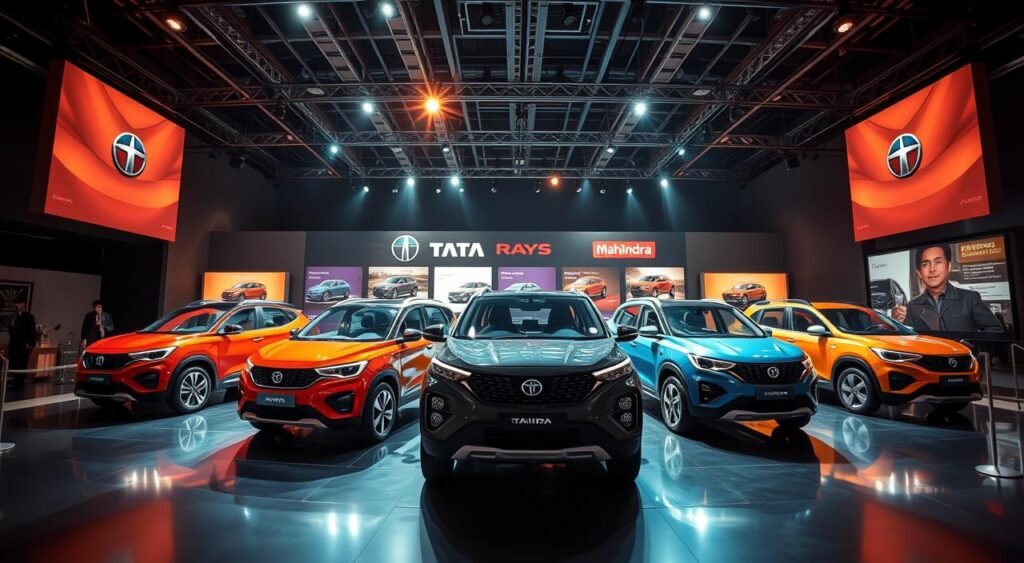
Introduction to Tata Motors
Tata Motors is India’s largest car maker by revenue. They started the compact SUV segment with the Nexon. Their range includes affordable hatchbacks and premium SUVs, meeting different customer needs.
Recently, they’ve focused on electric vehicles. The Nexon EV is leading in domestic EV sales, showing their commitment to green technology.
Introduction to Mahindra & Mahindra
Mahindra is known for rugged SUVs and utility vehicles. They’ve built a strong reputation for reliability and off-road prowess. Models like Thar, Scorpio, and XUV700 show their skill in making vehicles for both city and rural use.
Their focus on true SUV qualities makes them stand out in a competitive market.
Market Trends and Consumer Preferences
Today, SUVs make up over 50% of car sales in India. This change is due to lifestyle shifts and better roads.
| Consumer Priority | Percentage of Buyers | Key Features Desired |
|---|---|---|
| Safety Features | 78% | 6 airbags, ABS, ESP |
| Fuel Efficiency | 72% | 15+ km/l average |
| Connected Technology | 65% | Touchscreen, smartphone integration |
| Space & Comfort | 70% | 7-seater options, premium interiors |
Both Tata and Mahindra are meeting these needs with their upcoming cars. They offer better safety, fuel efficiency, and connectivity. The 2025 lineup is set to excite with these features.
Anticipated Tata Car Models for 2024
Tata Motors is getting ready to show off new versions of its favorite cars in 2024. They plan to make their lineup better with new looks, cool features, and better performance. These new Tata & Mahindra cars show the brand’s dedication to meeting customer needs in India.
Tata Harrier Refresh
The Tata Harrier facelift will start at Rs 15 lakh ex-showroom. It will get some new looks and a fresh interior. The current 2-litre diesel engine has 170PS power and 350Nm torque, with manual and automatic options.
A new 1.5-litre turbo-petrol engine might be added. This will give customers more choices. It will come with a panoramic sunroof, ventilated seats, and more. The dual-zone climate control and 12.3-inch screen make it comfy and connected.
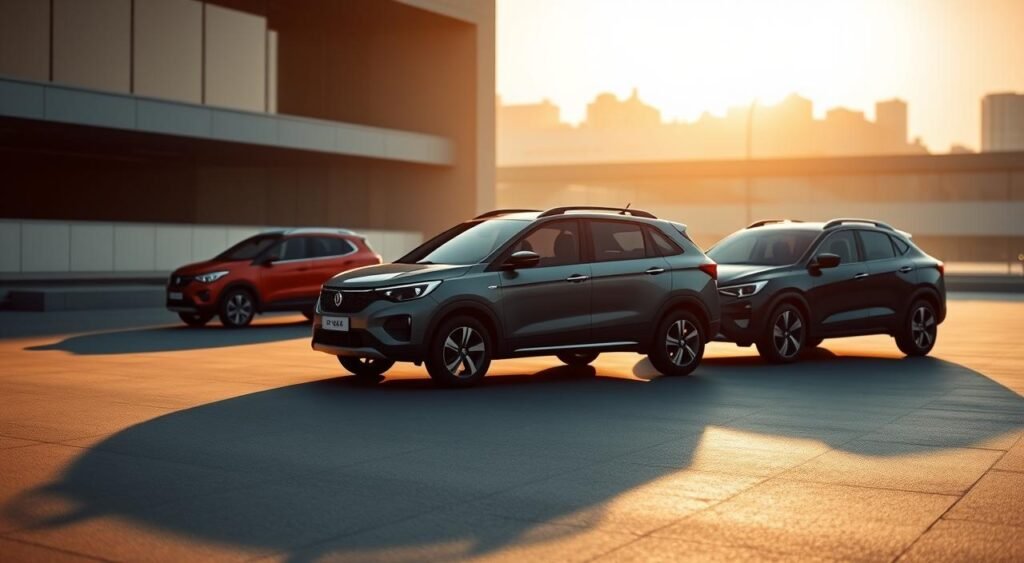
Tata Nexon EV Upgrades
The electric SUV segment will get a big boost with the updated Nexon EV. It will use the same electric platform but with better range and faster charging. The current version goes 312 km and hits 100 km/h in 9.9 seconds.
Tata Altroz Facelift
The premium hatchback is getting a design update and new features. These new Tata & Mahindra cars show the brand’s commitment to value and modern amenities. They aim to offer great performance at various price points.
Exciting Mahindra Vehicle Launches on the Horizon
Mahindra is making big moves in the Indian SUV market. They’re updating their popular models with new features and better performance. These new car releases show Mahindra’s dedication to meeting customer needs.
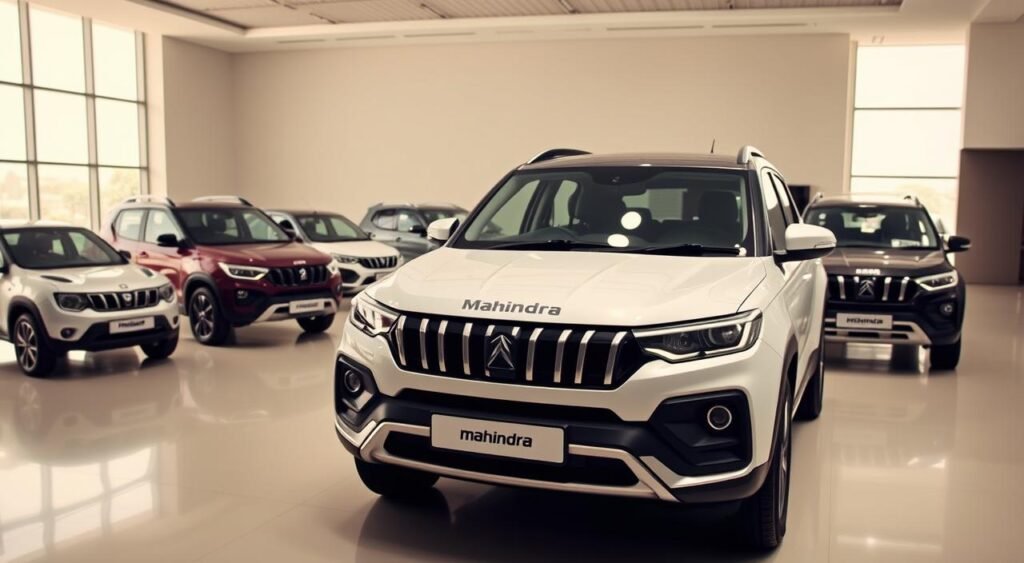
XUV700 Variants
The XUV700 lineup is getting bigger with new trim levels. Now, even the entry-level models have advanced safety features. Mid-range options come with powered driver seats and wireless charging.
Top-spec models get premium leather and ambient lighting. These updates make the XUV700 even better.
Scorpio-N Updates
The Scorpio-N is getting a big boost with new diesel automatic variants. Manual transmission options now have hill-hold assist and traction control. The interior gets upgraded materials and a bigger infotainment display.
These changes show Mahindra’s commitment to excellence in the SUV market.
Thar New Features
The Thar facelift is coming with big upgrades starting at Rs 12 lakh ex-showroom. It has a new grille and updated tail lamps. Inside, there are dual 10.25-inch screens for a better dashboard experience.
Wireless Android Auto and Apple CarPlay are now standard. There are also ventilated seats and automatic climate control for comfort. The 360-degree camera system boosts off-road capability. Engine options include a 2.0-liter turbo-petrol and a 2.2-liter diesel.
Innovations in Technology and Design
The upcoming Tata & Mahindra car launches in India are all about the latest tech and design. They’re introducing smart features, eco-friendly engines, and digital connectivity. These changes show a move towards green and tech-smart cars.
Electric Vehicle Advancements
Tata Motors is at the forefront of the electric car movement. The Tata Sierra EV combines retro charm with modern electric tech. It’s set to arrive between October 2025 and March 2026.
This car has sleek styling with connected LED lights and flush door handles. Inside, a wide three-screen setup across the dashboard offers a digital dive.
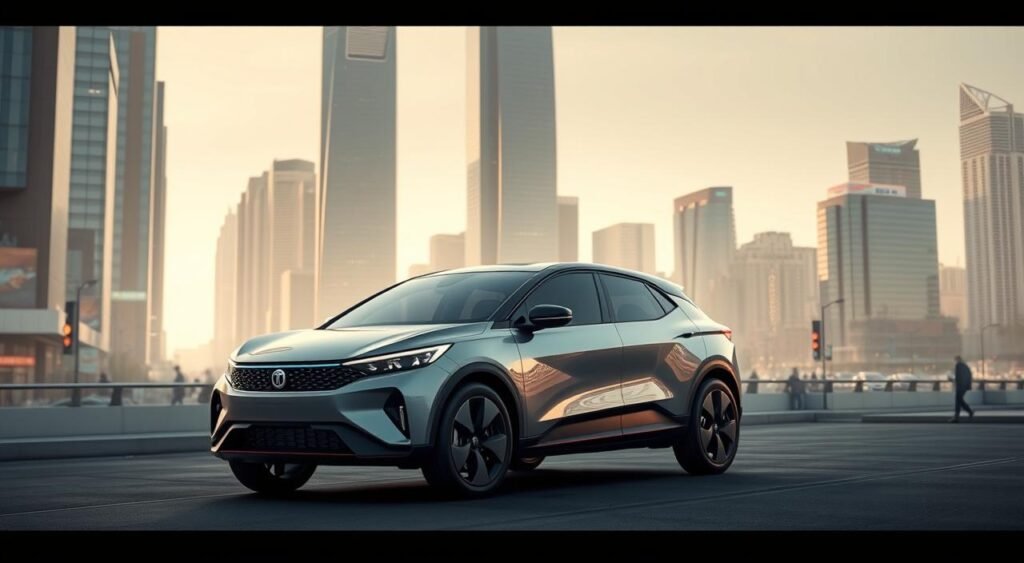
Connected Car Features
Smart connectivity is a big deal in the new Tata & Mahindra cars. They come with:
- Wireless smartphone integration
- Multiple display screens for infotainment
- Voice-activated controls
- Real-time navigation updates
- Remote vehicle monitoring apps
Sustainable Manufacturing Practices
Both Tata and Mahindra are going green with their car launches. They focus on:
| Practice | Tata Motors | Mahindra |
|---|---|---|
| Renewable Energy Use | Solar panels at plants | Wind energy adoption |
| Water Conservation | Zero liquid discharge | Rainwater harvesting |
| Recycled Materials | 25% recycled plastics | 30% recycled steel |
Performance Enhancements in Upcoming Models
The latest news from Tata Mahindra shows big improvements in their cars. Their teams worked hard to make engines that are both strong and fuel-efficient. These changes mean better speed, smoother shifting, and overall better performance for driving in India.
Engine Options and Specifications
Tata Motors has a new 2.0-liter diesel engine that makes 170PS power and 350Nm torque. They also added a 1.5-liter turbo-petrol engine for better city and highway driving. The Sierra model will have this engine, with a diesel option too.
Mahindra keeps using their trusted engines, like the 2.0-liter turbo-petrol and 2.2-liter diesel. They also have a 1.5-liter diesel for the entry-level cars. You can choose from 6-speed manual or automatic transmissions in many models.
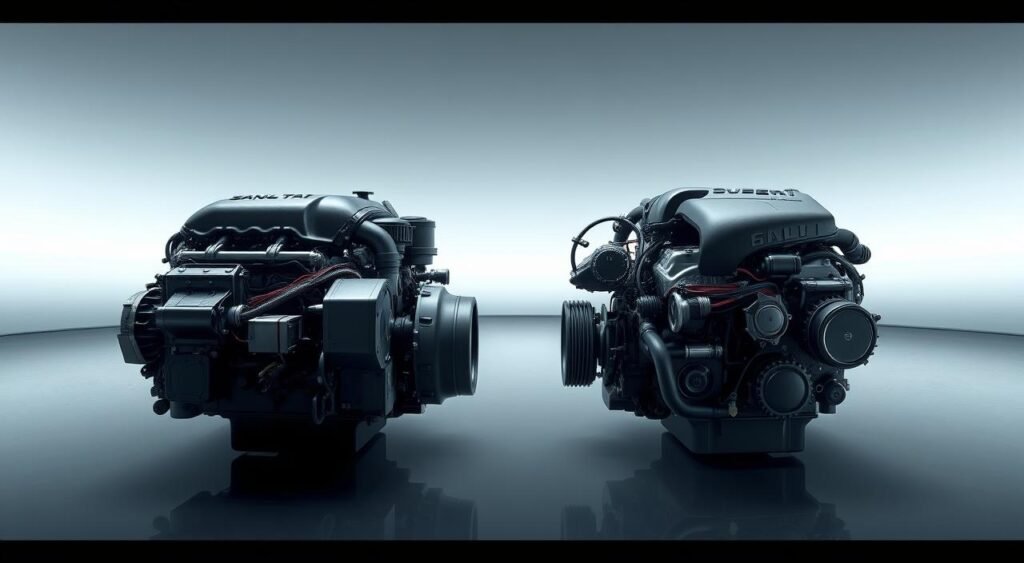
Fuel Efficiency Improvements
Tata and Mahindra’s new engines use less fuel but are just as powerful. Turbo-petrol engines are great for city driving. Diesel engines do well on long trips, saving fuel.
Driving Experience and Handling
New suspension systems make driving on Indian roads smoother. Electric power steering helps with control at any speed. Sport modes in some models give drivers a thrilling experience. These updates make daily driving fun and ready for weekend fun too.
Safety Features to Look Out For
Safety is now a key focus for car makers as they get ready to launch new Tata & Mahindra models. The latest cars coming to India will have better protection and tech to prevent accidents. This change shows how Indian car makers are stepping up their game in safety.
Advanced Driver Assistance Systems (ADAS)
The Mahindra Sierra will be the first to use Level-2 ADAS technology in India. This means top-notch safety features will be available to more people. The systems include:
- Adaptive cruise control with stop-and-go functionality
- Lane keeping assist and departure warning
- Automatic emergency braking
- Blind spot detection
- Traffic sign recognition
Crash Test Ratings and Safety Certifications
Recent crash tests show Tata & Mahindra’s dedication to safety. The Maruti Victoris got a 5-star Bharat NCAP rating, setting a new standard. Both companies have made their cars safer with better structures and safety gear.
| Model | Airbags | NCAP Rating | Key Safety Features |
|---|---|---|---|
| Tata Harrier | 6 | 4-star expected | ESP, hill hold, ISOFIX |
| Mahindra Thar | 6 | 4-star | Structural reinforcements, rollover protection |
| Tata Nexon EV | 6 | 5-star | Battery protection system, regenerative braking |
Price Expectations for New Tata and Mahindra Cars
The car market in India is excited for the new prices of Tata & Mahindra new launches. These companies are setting their prices to win over more customers. With GST changes, cars are now more affordable for people in India.
Competitive Pricing Strategies
The prices of what’s next from Tata & Mahindra show they’ve done their homework. They aim to be competitive with other big names:
| Model | Expected Price (Ex-showroom) | Key Competitors |
|---|---|---|
| Mahindra Thar Facelift | ₹12 lakh | Maruti Suzuki Jimny |
| Tata Harrier | ₹15 lakh | Kia Seltos, Hyundai Creta |
| Tata Safari | ₹15.50 lakh | Honda Elevate, Skoda Kushaq |
| Tata Sierra | ₹15 lakh | Maruti Grand Vitara |
Value for Money Analysis
The pricing for Tata & Mahindra new launches is well thought out. Prices are a bit higher than before, but it’s worth it. You get more features and tech for your money. This makes them great choices in their markets.
Regional Preferences and Market Impact
India’s vast geography leads to different car preferences in various regions. Tata and Mahindra are making cars that fit local needs. Whether in cities or rural areas, each place has its own car needs.
Demand in Urban vs. Rural Areas
In cities, people want cars that are fuel-efficient and have cool tech. They like cars that are easy to park and drive in tight spaces. Places like Mumbai and Delhi prefer cars with smart features.
In rural areas, cars need to be tough and can handle rough roads. SUVs are popular here because they are strong and can carry lots of stuff.
SUVs are big in both city and country areas. But city folks like them for the view and safety. Country folks like them for being able to carry lots of stuff and go over rough roads.
Customization Options for Different Markets
Car makers now offer many engine choices to meet regional needs. The latest cars in India include:
- Petrol mild-hybrid systems for city driving
- Strong hybrid variants for those who care about the planet
- Petrol-CNG options for work use
- Diesel engines for long trips in the country
Car options change a lot based on where you live. Basic cars are for those who don’t want to spend a lot. Fancy cars with leather and tech are for city folks. This way, both Tata and Mahindra can sell more cars in India’s varied car market.
Customer Feedback and Market Predictions
The car market in India is on the verge of a big change. People are excited for the new Tata & Mahindra cars coming soon. Research shows that customers are very positive, thanks to the companies’ smart planning and new car releases.
Anticipating Consumer Reactions
The return of the Tata Sierra has brought back memories for many. Social media and car forums are full of talk about the new Tata and Mahindra cars. People are really looking forward to these cars because they mix old charm with new tech.
- Modern safety features integrated into classic designs
- Advanced infotainment systems with smartphone connectivity
- Improved fuel efficiency without compromising performance
- Competitive pricing compared to international brands
Expert Opinions on Upcoming Models
Experts say the SUV market will keep growing until 2024 and beyond. They think Tata and Mahindra have found what people want. The new Mahindra Thar is expected to keep its fans happy and attract city dwellers too.
As these new cars hit the market, competition will get fiercer. But Tata and Mahindra are well-positioned because of their focus on value-driven engineering and localized production. Experts believe these cars will change what people expect from their vehicles.
Conclusion: What to Expect from Tata and Mahindra
The latest news from Tata Mahindra shows a big change for these Indian car makers. They are getting ready to launch cars that mix new tech with practical features for Indian roads. These new cars will have what buyers want: safe SUVs with smart tech and good prices.
Summarizing Key Features and Trends
Tata Motors is updating the Harrier and Safari with new looks and better inside designs. They are also bringing back the Sierra name, mixing old charm with new tech. Mahindra is making the Thar better and adding more XUV700 options. Both brands are adding Level-2 ADAS tech, big screens, and car connectivity.
They are focusing on safety too, with six airbags in many cars. They’re also working on making their cars safer in crashes. Prices will stay low thanks to GST benefits. Both companies know that value is as important as features in India.
The Future of Indian Automotive Landscape
SUVs will keep being the top choice for buyers. Tata and Mahindra are adding more tech to their cars at all prices. Electric cars will become more popular as charging spots grow. Safety will get better as people want more protection.
The rivalry between these Indian brands will drive innovation. This means better choices for car buyers at every price level.
FAQ
When will the Tata Harrier facelift launch and what’s the expected price?
The Tata Harrier facelift is set to launch soon. It will start at Rs 15 lakh ex-showroom. The new model will have updated styling, a fresh interior, and a new 1.5-litre turbo-petrol engine. It will also keep the 2-litre diesel engine, which makes 170PS and 350Nm.
What are the key updates coming to the 2025 Mahindra Thar facelift?
The 2025 Mahindra Thar facelift will launch in early 2026 at Rs 12 lakh ex-showroom. It will get a new grille, a revised rear bumper, and updated tail lamps. Inside, you’ll find dual 10.25-inch screens, wireless Android Auto/Apple CarPlay, and more.
When is the Tata Sierra EV expected to launch and what features will it have?
The Tata Sierra EV is coming between October 2025 and March 2026. It will mix old-school charm with modern looks. It will have connected LED lights, flush door handles, and a wide screen setup. It will also have Level-2 ADAS and wireless connectivity.
What engine options will be available in the upcoming Tata and Mahindra models?
Tata will offer a 2-litre diesel engine and a new 1.5-litre turbo-petrol engine. Mahindra will have a 2.0-litre turbo-petrol, a 2.2-litre diesel, and a 1.5-litre diesel for entry models. Both will have 6-speed manual and automatic transmissions.
How have recent GST reforms affected car prices in India?
GST reforms have made cars cheaper in India. This has made them more affordable for buyers. It has also boosted SUV demand in cities and rural areas, with manufacturers able to offer good prices and features.
What safety improvements can we expect in the new Tata and Mahindra launches?
The new models will have big safety upgrades. The Mahindra Thar facelift will get six airbags and structural updates. The Tata Sierra will have Level-2 ADAS. All models will have advanced driver assistance technologies. These show the makers’ focus on safety and meeting high crash test standards.
Which competitors will these new Tata and Mahindra SUVs face in the market?
The new SUVs will face tough competition. They will go up against the Kia Seltos, Hyundai Creta, Honda Elevate, Maruti Grand Vitara, and Skoda Kushaq. They will compete on features, safety, and price in the compact and mid-size SUV segments.
What are the latest Tata Mahindra car news and anticipated models for 2025?
There’s a lot of news on new Tata and Mahindra cars coming in 2025. Expect the Tata Harrier/Safari facelifts, the Tata Sierra’s return, and the Mahindra Thar update. These models will have the latest tech, hybrid options, and more safety features to meet what buyers want.
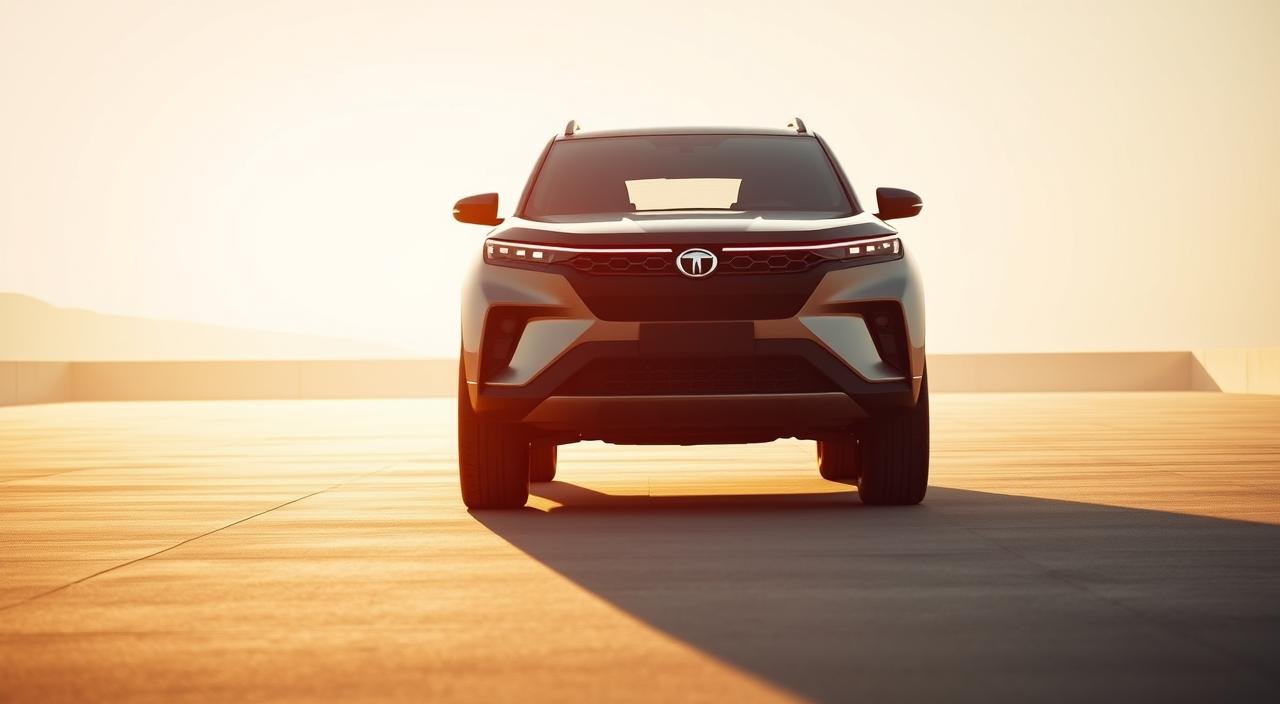
Aug
Is the Tata Harrier EV ready to change India’s electric vehicle scene? Or does it miss the mark? Tata Motors is getting ready to make its popular Harrier electric. The diesel Harrier already impresses with its 2-liter engine, giving 170 PS power and 350 Nm torque.
The Harrier is a standout in the SUV market with its big size. It’s 4,605mm long and has a 2,741mm wheelbase. Starting at Rs 18.99 lakh, it beats rivals like the Hyundai Creta in size and presence. As charging gets better and battery tech improves, the Tata Harrier EV is set to fill a big gap in India’s electric SUV market.
This analysis looks at four key upgrades for the Tata Harrier EV. These changes could make it a top choice in the electric SUV market. Each improvement tackles real concerns for Indian buyers looking for their next electric SUV.
Key Takeaways
- The Tata Harrier EV builds on a proven platform with impressive dimensions exceeding competitors
- Current diesel variants showcase strong performance with 170 PS power and 350 Nm torque
- India’s evolving EV infrastructure creates opportunities for premium electric SUVs
- Four specific improvements could elevate the Harrier EV to segment leadership
- The electric version addresses gaps in India’s premium EV market
- Competitive pricing starting at Rs 18.99 lakh positions it well against rivals
Introduction to Tata Harrier EV
The car world in India is changing fast, with electric vehicles becoming more popular. Tata Motors is ready to make its Harrier SUV electric. This review looks at why the Harrier EV is a big deal in the EV market in India.
Overview of the Tata Harrier EV
The Tata Harrier EV is a big step for the brand in the electric SUV market. It uses the same platform as the diesel Harrier but is electric. It’s for people who want a car that’s good for the planet and doesn’t lose out on comfort or space.
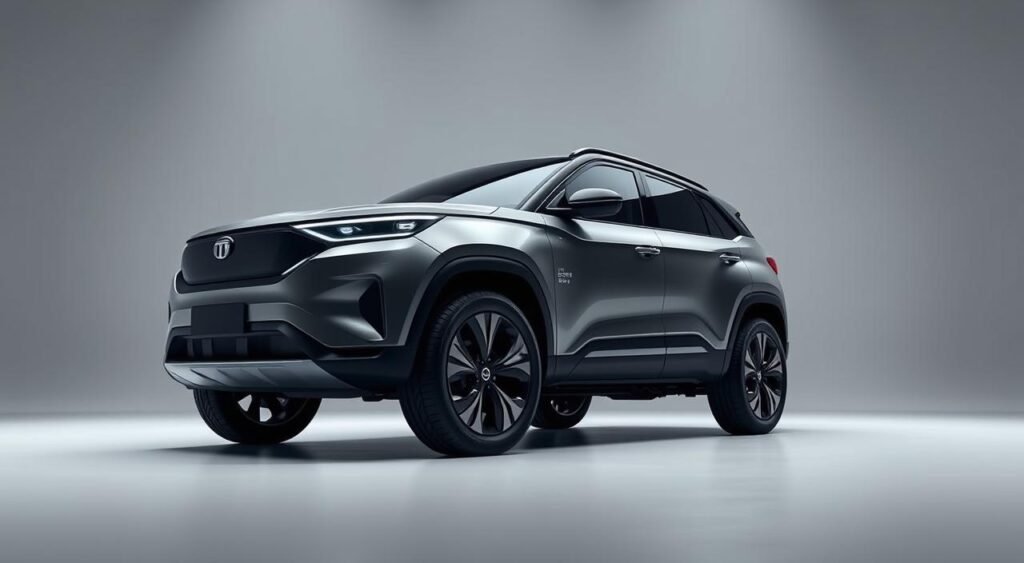
Key Features and Specifications
The Harrier EV has some amazing features:
- Auto-LED bi-projector headlights for better visibility
- Dual 10.25-inch displays for entertainment and info
- Level-2 ADAS for safer driving
- Range of 400-500km, meeting current needs
- Advanced battery system for better efficiency
Market Positioning in India
The Harrier EV is priced between Rs 18.99-20.69 lakh. It’s in a competitive market where people want good value and new ideas. The EV market in India has grown a lot, with better charging and higher range expectations. The Harrier EV meets these needs for city and highway driving.
Design and Aesthetics
The Tata Harrier EV has a bold design that mixes modern looks with SUV toughness. Its exterior styling makes it stand out on the road. The inside is all about comfort and luxury. Let’s see what makes this electric SUV special and how it could get even better.
Exterior Design Elements
The Harrier EV’s exterior is eye-catching, with blacked-out ORVMs and LED turn indicators. Its 17-inch alloy wheels are strong, and the LED taillights add a modern touch. For those who love adventure, there are roof rails for extra practicality.
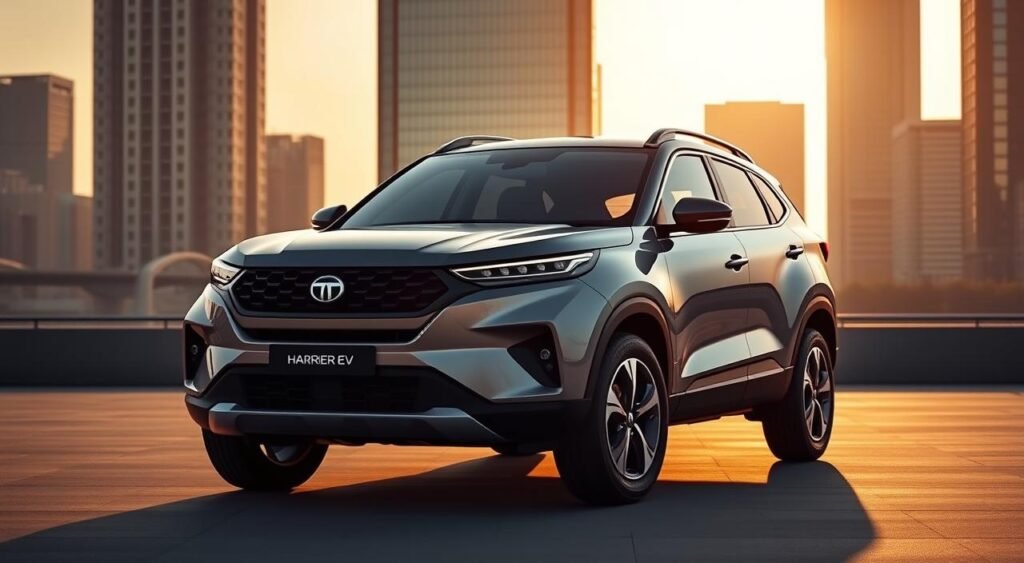
The design focuses on clean lines and being aerodynamic. The front has a closed-off grille, typical of EVs, with sharp LED headlamps. Side cladding adds protection and visual appeal to the profile.
Interior Comfort and Features
Inside, the Harrier EV impresses with black leatherette seats and tan accents. The 4-spoke steering wheel has an illuminated Tata logo, adding a touch of luxury. The two-tone cabin theme makes it welcoming.
- 6-way power-adjustable driver seat
- Spacious legroom surpassing compact SUVs
- Premium leatherette upholstery
- Illuminated brand elements
Color Options and Customization
The Harrier EV comes in several monotone colors to match different tastes. While the colors are good, more customization options could attract more buyers. Competitors like Hyundai Creta offer dual-tone alloy wheels and dynamic turn indicators, showing what’s possible for personalization.
Performance and Driving Experience
The Tata Harrier EV is a big step forward in electric cars. As cars move to electric power, it’s key to know how they drive. The Harrier EV mixes power with efficiency, making it a top choice for electric driving.
Battery Efficiency and Range
Battery tech is key for car performance. The Harrier EV’s battery is top-notch in its class. Electric cars usually get 5-10 km/kWh, depending on the battery and car setup.
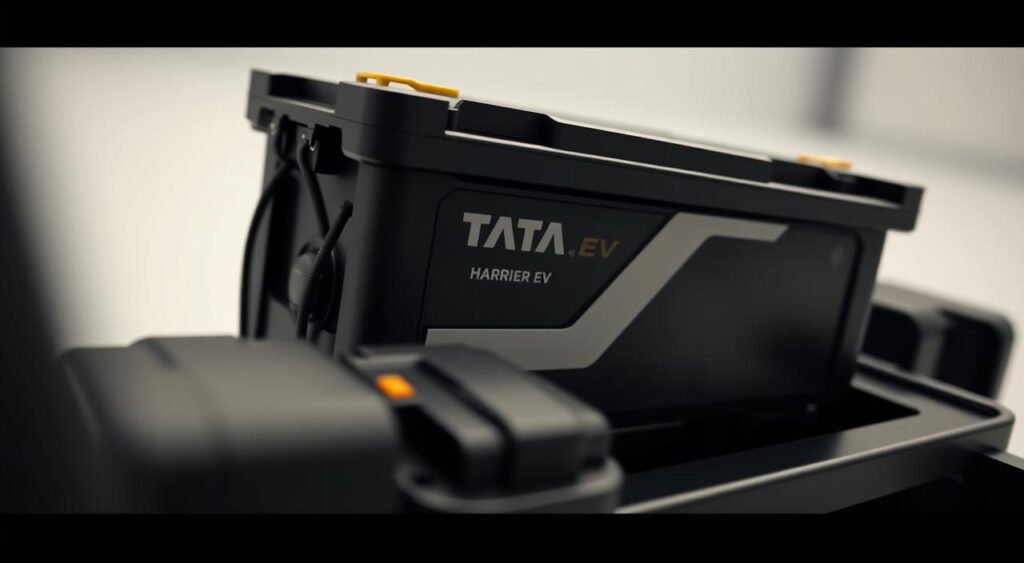
The car’s range changes with how you drive and the battery size. Cars with NMC batteries are often lighter and more efficient. Keeping the battery cool is also important for its performance, no matter the weather.
Handling and Ride Quality
The Harrier EV handles well, perfect for Indian roads. It’s comfy and stable, even when turning. You can adjust how much the car uses regenerative braking to fit your driving style.
How the car is weighted affects how it handles. Cars with the engine in the front are usually easier to handle. Special tires and wheels make the ride smoother and more efficient.
Comparisons with Other EVs
Here’s how the Harrier EV stacks up against other electric cars:
| Model | 0-100 kmph | Battery Type | Efficiency |
|---|---|---|---|
| Hyundai Creta EV | 7.5 seconds | 52kWh NMC | 8-10 km/kWh |
| Mahindra BE6 | 7.0 seconds | 79kWh LFP | 5-7 km/kWh |
These numbers show different ways electric cars are made. Efficiency analysis shows that lighter batteries use less energy, even if they’re smaller.
Technology and Features
The Tata Harrier EV is packed with modern tech to compete with other electric cars in India. It has both useful features and advanced safety systems. Yet, some areas could be better to keep up with the leaders.
Infotainment System and Connectivity
The Harrier Adventure X has wireless Apple CarPlay and Android Auto, along with a 6-speaker sound system. This setup is good for everyday music. It also has front 45W Type-C charging ports and an illuminated glovebox for easy access.
But, some rivals have better audio tech. The Hyundai Creta has an 8-speaker Bose system. The Mahindra BE6 even has a Harman Kardon Dolby Atmos setup, rivaling premium Burmester systems. These systems offer a better listening experience than the Harrier’s.
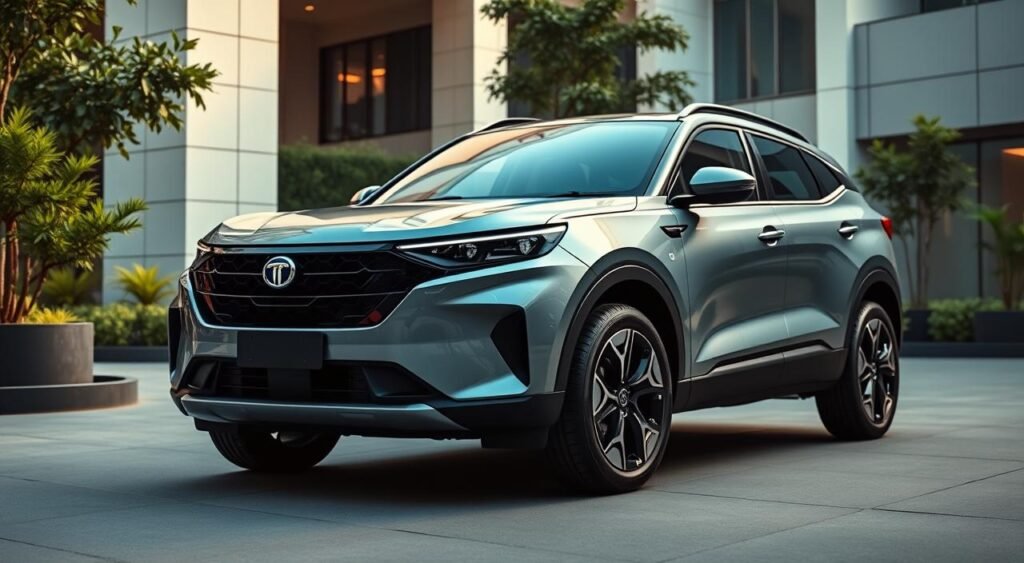
Autonomous Driving Capabilities
The Harrier EV has Level-2 ADAS for highway driving help. It includes:
- Adaptive cruise control for safe distances
- Lane keeping assist for stability
- 360-degree camera system for better visibility
- Rain-sensing wipers for weather adaptability
Some rivals have more features like autopark and blind spot monitoring with cameras. These are chances for the Harrier to improve in the future.
Safety Features and Ratings
The Harrier EV focuses on keeping passengers safe with many safety systems. It comes with 6 airbags, ISOFIX child seat mounts, and electronic stability control. The 360-degree camera system also helps with parking and tight spaces.
| Safety Feature | Tata Harrier EV | Segment Standard |
|---|---|---|
| Airbags | 6 | 6-7 |
| ADAS Level | Level 2 | Level 2 |
| 360° Camera | Yes | Yes |
| Blind Spot Monitoring | No | Available in some |
| HUD Display | No | Available in premium variants |
The Harrier’s safety meets industry standards but could be more unique. Adding features like heads-up display (HUD) and better blind spot monitoring would make it stand out more in the EV market.
Conclusion: The Path Forward for Tata Harrier EV
The Tata Harrier EV is at a turning point. The Indian electric SUV market is growing fast, with cars like MG ZS EV and Hyundai Kona Electric leading the way. To succeed, the Harrier EV must offer great value at a competitive price. It has a strong base thanks to Tata’s reputation and roomy design, but it needs to do better to win over customers.
Addressing the Shortcomings
The Harrier EV has some key areas to work on. It needs to get better mileage than 8 km/kWh to keep up with the competition. Improving the battery management system is a top priority. Tata Motors also needs to grow its EV service network in big cities.
The car’s throttle needs to be smoother, matching the quick power of electric cars. This is what buyers want.
Future Updates and Improvements
Upcoming updates will add features like ventilated seats and climate control. Wireless charging will also be added. The goal is to make the Harrier EV fast, accelerating from 0-100 kmph in under 8 seconds.
Long-distance travel is a big deal, so a range of 400+ kilometers is essential. Adding advanced safety features will make the car more appealing to tech lovers.
Final Thoughts on Market Position
The Harrier EV has a real chance to shake up the Indian electric SUV market. It has a lot going for it, like a solid feature list and a reliable platform. But, it must fix its current issues and keep its price competitive.
India’s growing EV infrastructure is a big plus for new players. With the right updates and a smart marketing strategy, the Harrier EV could become a top choice in this fast-growing field.
FAQ
When will the Tata Harrier EV launch in India?
Tata Motors hasn’t set a launch date for the Harrier EV yet. But, they’ve shown they can do it with the current Harrier. The diesel versions have cool features that could work well in an electric car as India’s EV setup gets better.
What is the expected price range for the Tata Harrier EV?
The Harrier diesel costs between Rs 18.99-20.69 lakh. EVs in the same class cost between Rs 17.99-25.72 lakh. So, the Harrier EV should be priced to compete with the Hyundai Creta EV and Mahindra BE6.
What range can we expect from the Harrier EV?
People want EVs to go 400-500km in real life. The Harrier EV should aim for 8-10 km/kWh efficiency. It might need a 50-60kWh battery pack to keep up.
How does the Harrier’s size compare to other electric SUVs?
The Harrier is bigger than the Hyundai Creta, with a length of 4,605mm and a wheelbase of 2,741mm. It has more room inside, making it a strong contender in the electric SUV market.
What advanced features does the current Harrier offer that could transfer to the EV version?
The Harrier has Level-2 ADAS, a big touchscreen, and a digital display. It also has a 360-degree camera and wireless CarPlay/Android Auto. The EV version might get even more tech, like better regenerative braking.
What improvements would the Harrier EV need to compete effectively?
To beat the competition, the Harrier EV should have ventilated seats and dual-zone climate control. It should also accelerate fast and be very efficient. Plus, it needs better battery management and smooth braking.
How does Tata’s service network compare for EV support?
Tata Motors has a big service network in India. But, they need to make sure their EV service is top-notch. They should train their techs well and have good charging support at service centers.
